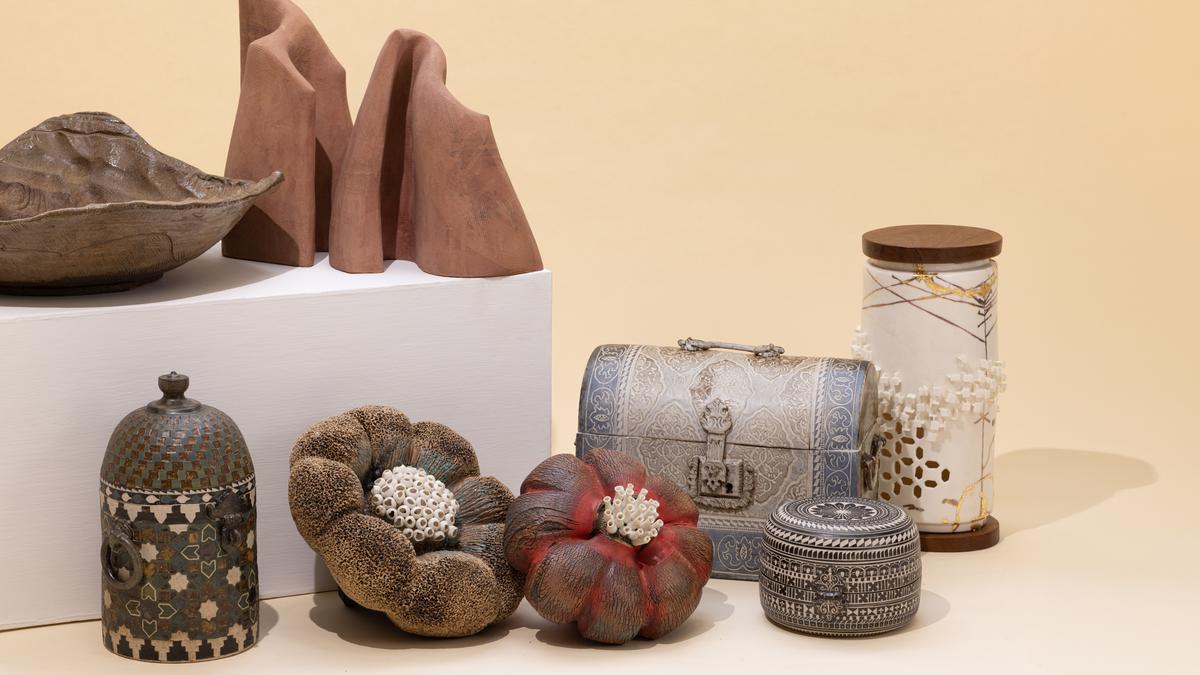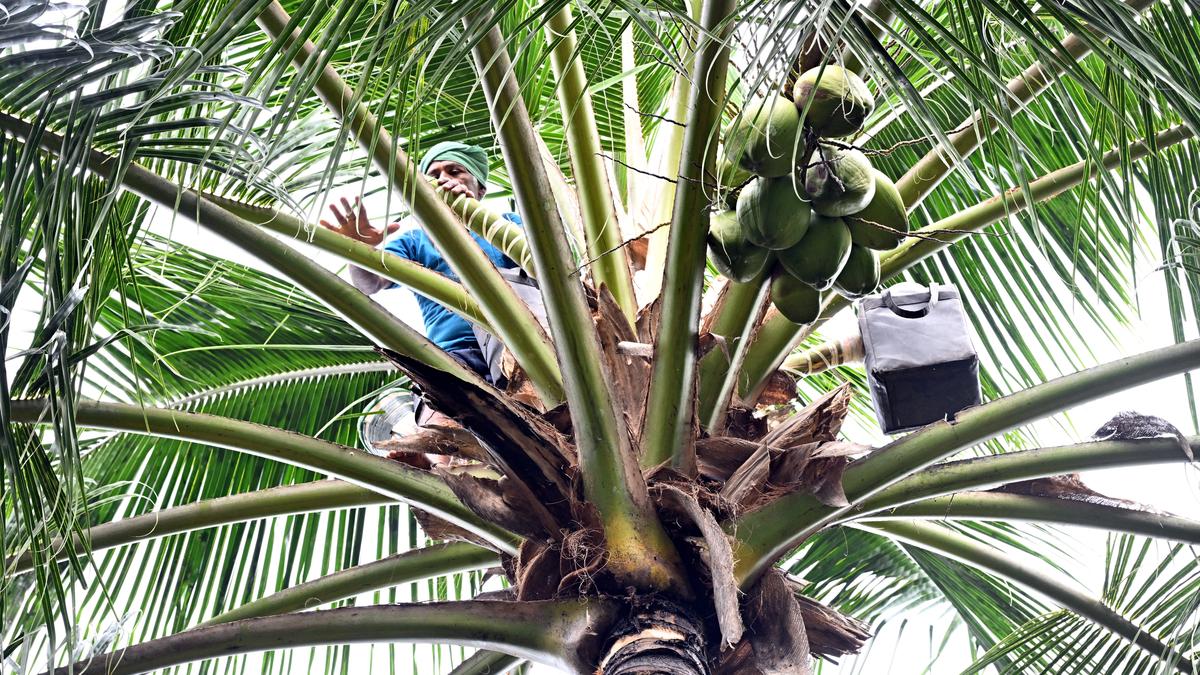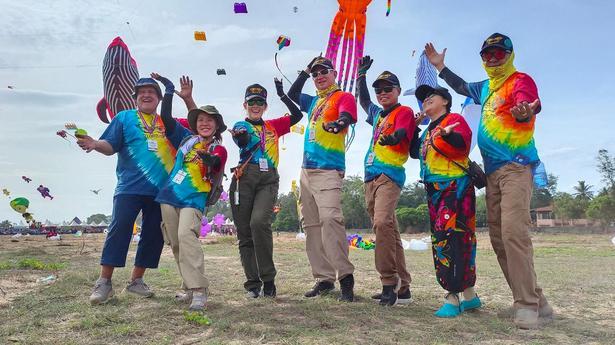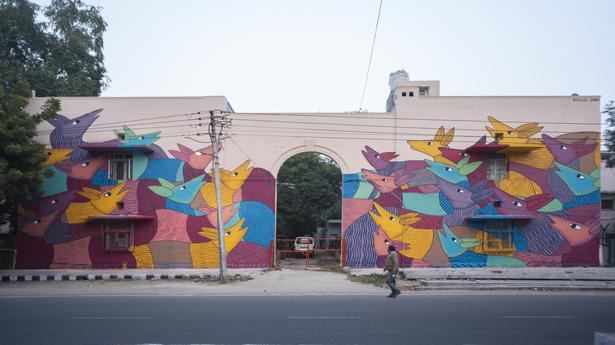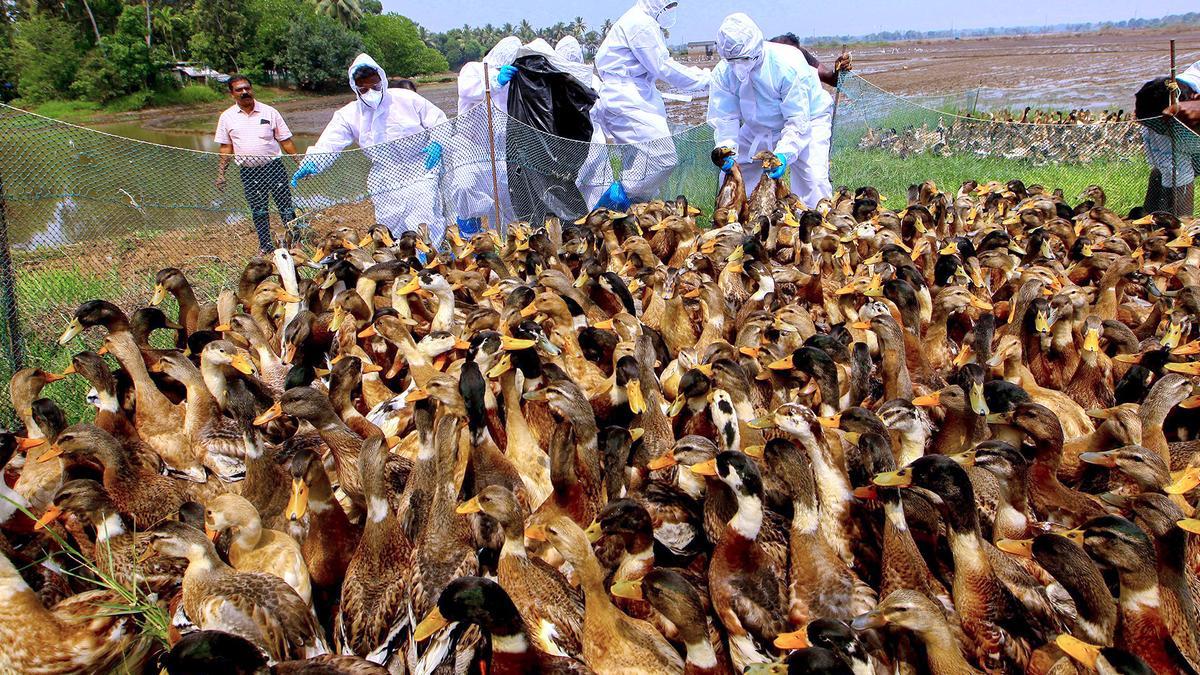Artworks for Padm at Bikaner House from January 30
| Photo Credit: SPECIAL ARRANGEMENT
India’s first curated platform for contemporary sculptural art, Padm, is hosting its inaugural exhibition. Conceptualised by Sakshi Ruia and curated by Falguni Bhatt, the show brings together a series of ceramic and stone sculptures by 14 contemporary artists showcasing the cultural heritage of the Silk Road. “It’s like unravelling a big story of shared creativity that connected diverse communities and shaped their traditions,” says Bhatt.
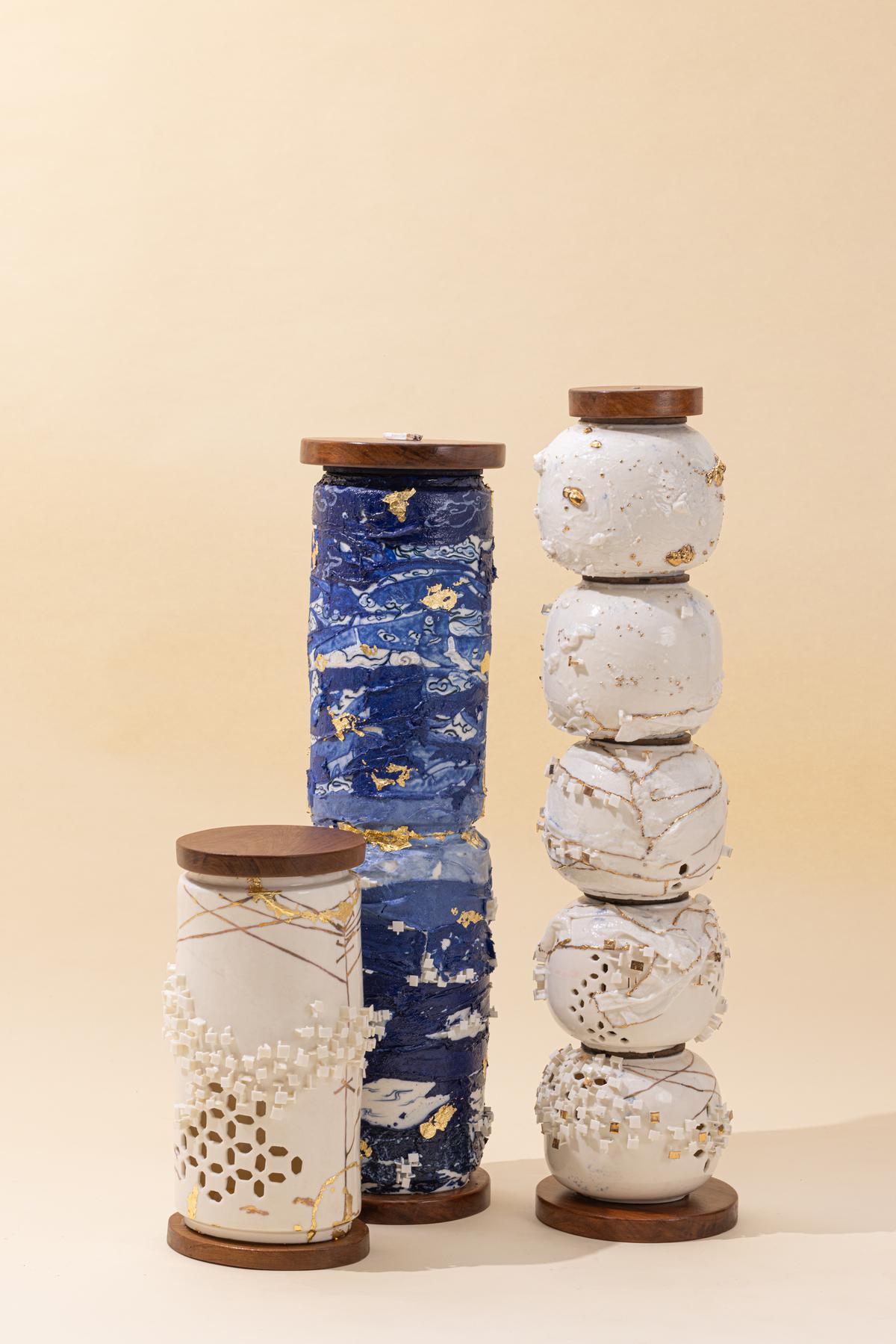
Kopal Seth artworks for Padm.
| Photo Credit:
SPECIAL ARRANGEMENT
Through motifs of horses and textiles, Sushma Anand’s work, “Odyssey,” portrays diverse landscapes, people, cultures and art that thrived along this ancient route. Drawing from the rich iconography of blue and white ceramics that traversed the Silk Road, Kopal Seth crafts spools of thread resembling columns. Her pieces weave a narrative connecting cultures worldwide—from China and Turkey to Japan, Korea, Morocco and India. “Each piece serves as a totem of shared ideas, craftsmanship and the global cultural exchange along the Silk Road,” says Seth.
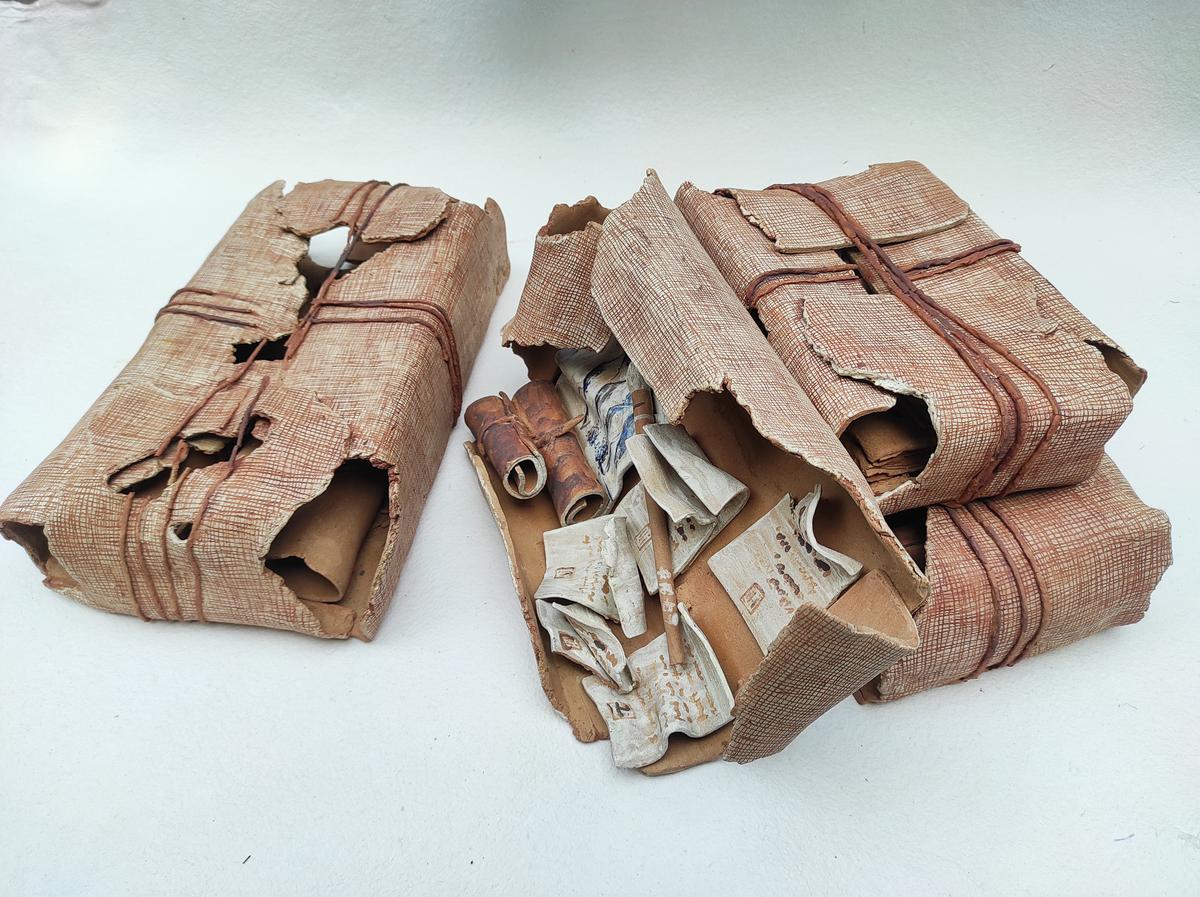
Kinjal Shah’s artwork in stoneware, paper and clay for Padm at Bikaner House from January 30.
| Photo Credit:
SPECIAL ARRANGEMENT
Nidhi Sabhaya’s works represent migration routes that explore the interconnectedness of human progress, economic integration and cultural exchange facilitated by the Silk Route. Kinjal Shah was drawn by the goods responsible for changing the course of history. “The exotic kurdish rugs, their techniques, stories and motifs were great examples of spontaneity in craftsmanship,” she says . Milan Singh’s work, ‘Aarambh’, captures the geographical characteristics of the Silk Route that continue to shape the present and future.
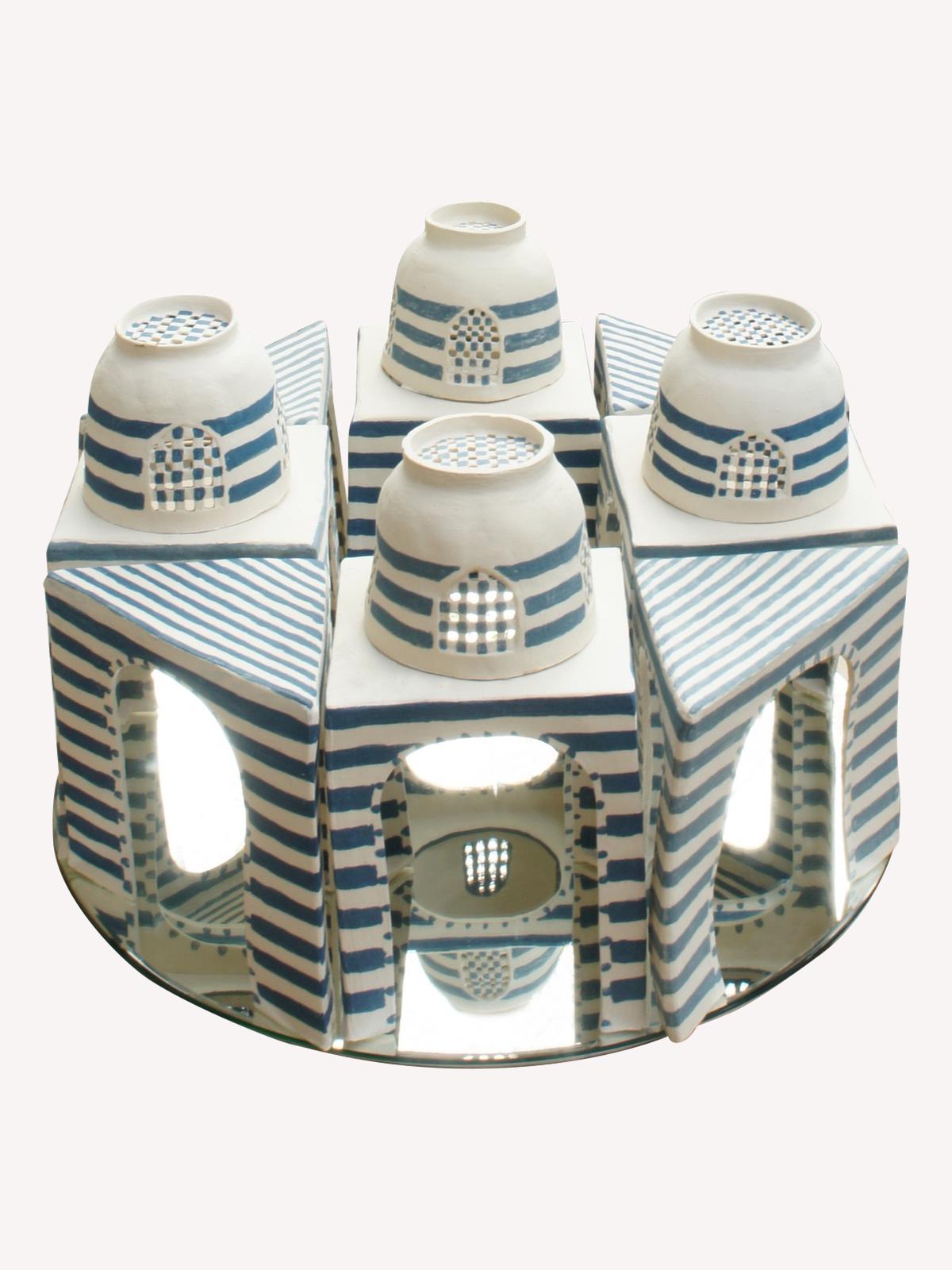
Ruddhi Vichare’s ‘Pasha Caravanserai’.
| Photo Credit:
SPECIAL ARRANGEMENT
Based on thorough research, Ruddhi Vichare’s works delve into carpets found in Khotan bearing Indian cultural iconography as well as the arches, domes and horizontal lines of Khan Assad Pasha caravanserais. In ‘An Ode to The Humble Onion,’ Veena Chandran uses layers of the vegetable to highlight untold stories of trade, cultural fusion and sustenance. “The onion becomes a symbol of civilizations coming together — reflecting its subtle yet profound legacy of human connection and interchange,” explains Chandran. Similarly, the sculptures in Mansie Shah’s ‘The Earth Uncurls’ are stained with tea post-firing, reflecting the social glue that fosters connections through the shared practice of tea drinking.
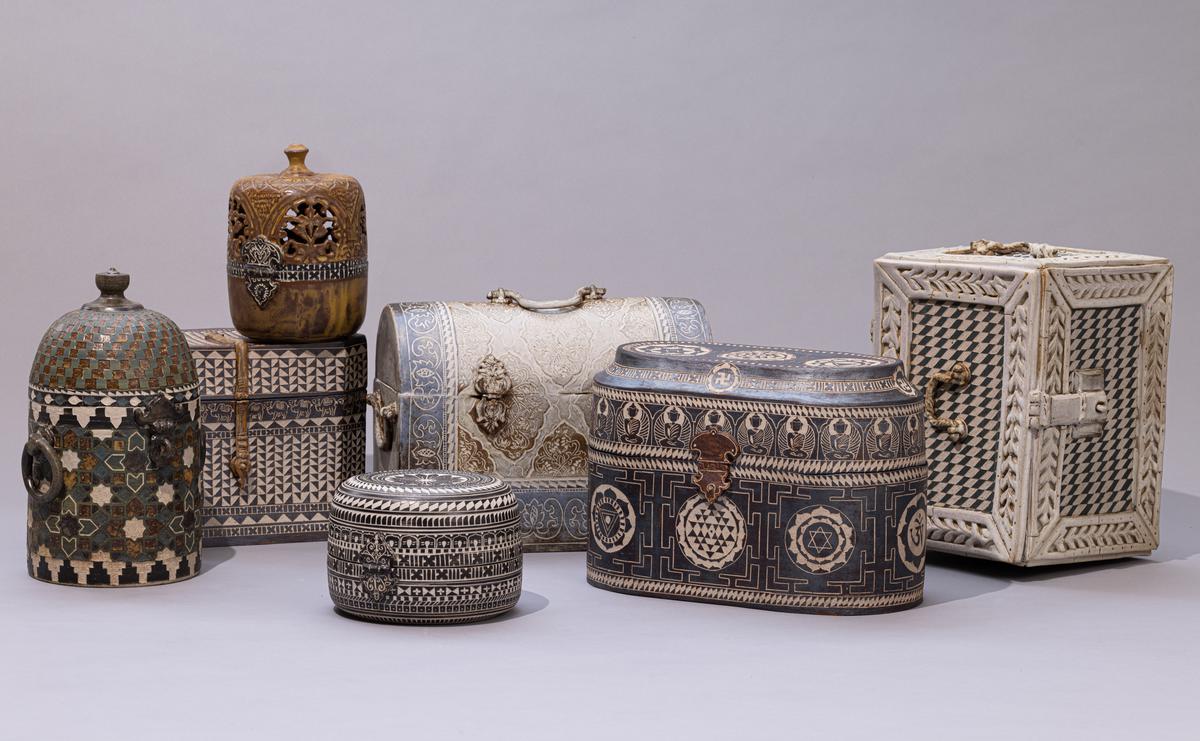
Sakshi Agarwal artworks for Padm.
| Photo Credit:
SPECIAL ARRANGEMENT
Sakshi Agarwal’s works, “Ottoman Box” and “Trousseau Chest”, delve into little known stories of artisans along the Silk Route, exploring the rich cultural, religious and artistic tapestry in their crafts. Khushboo Madnani’s works, ‘Seed Form’ and ‘Vessel’, embody the profound connection between nature’s essence and the human experience. “From flowers to fossils, my pieces reflect the intricacy of life’s processes,” says Madnani. Drawing from Indian temple architecture and geological caves, Souvik Das’ work pays tribute to the Kashmir Gurez Valley, a region along the ancient trade route.
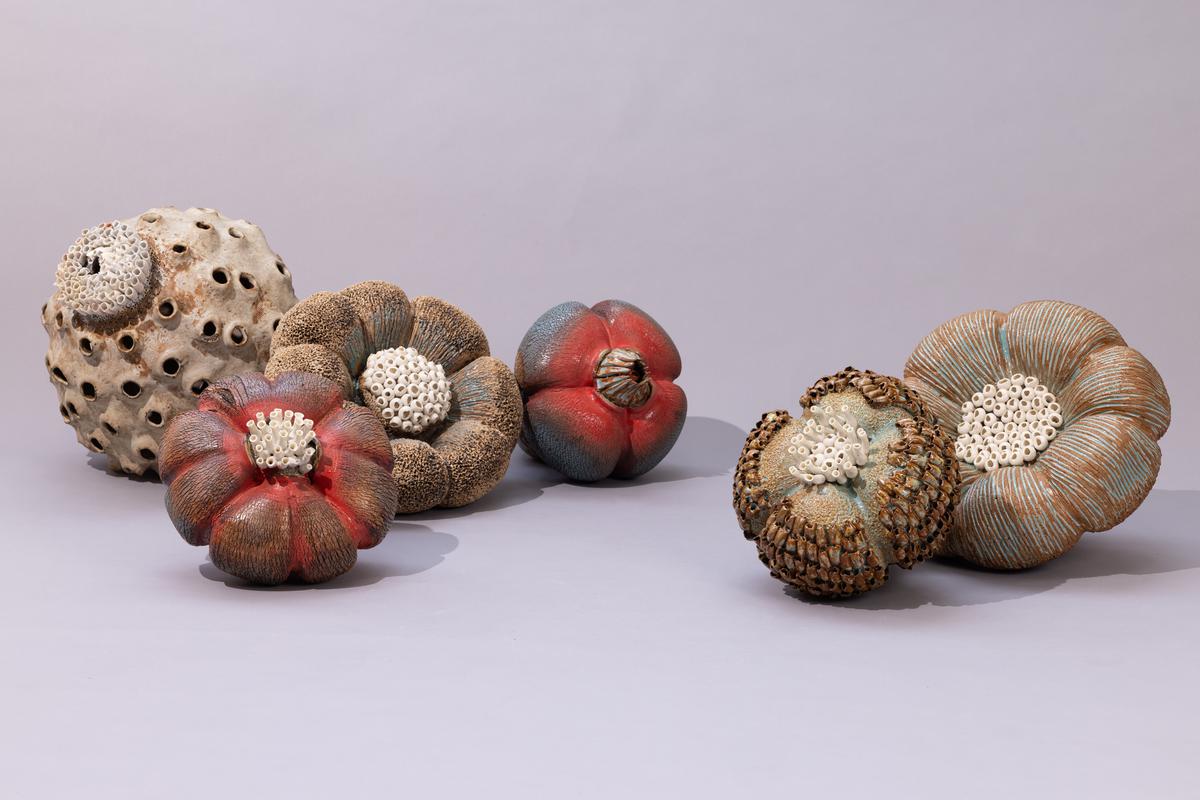
Milan Singh’s artworks.
| Photo Credit:
SPECIAL ARRANGEMENT
Using stone carving and ceramics, Suraj Sahu’s works reflect the ancient trade networks that connected countries through silk, cotton and other commodities. Created in an Anagama Kiln, Indrani Singh’s platter-like works that mirror the track marks on sand dunes evoke historical connections between people and cultures. Devesh Upadhyay’s three pieces intertwine natural elements with human forms, animals, birds, trees and fruits.
(At Bikaner House, near India Gate; From January 30 to February 4; 10am to 6pm)


